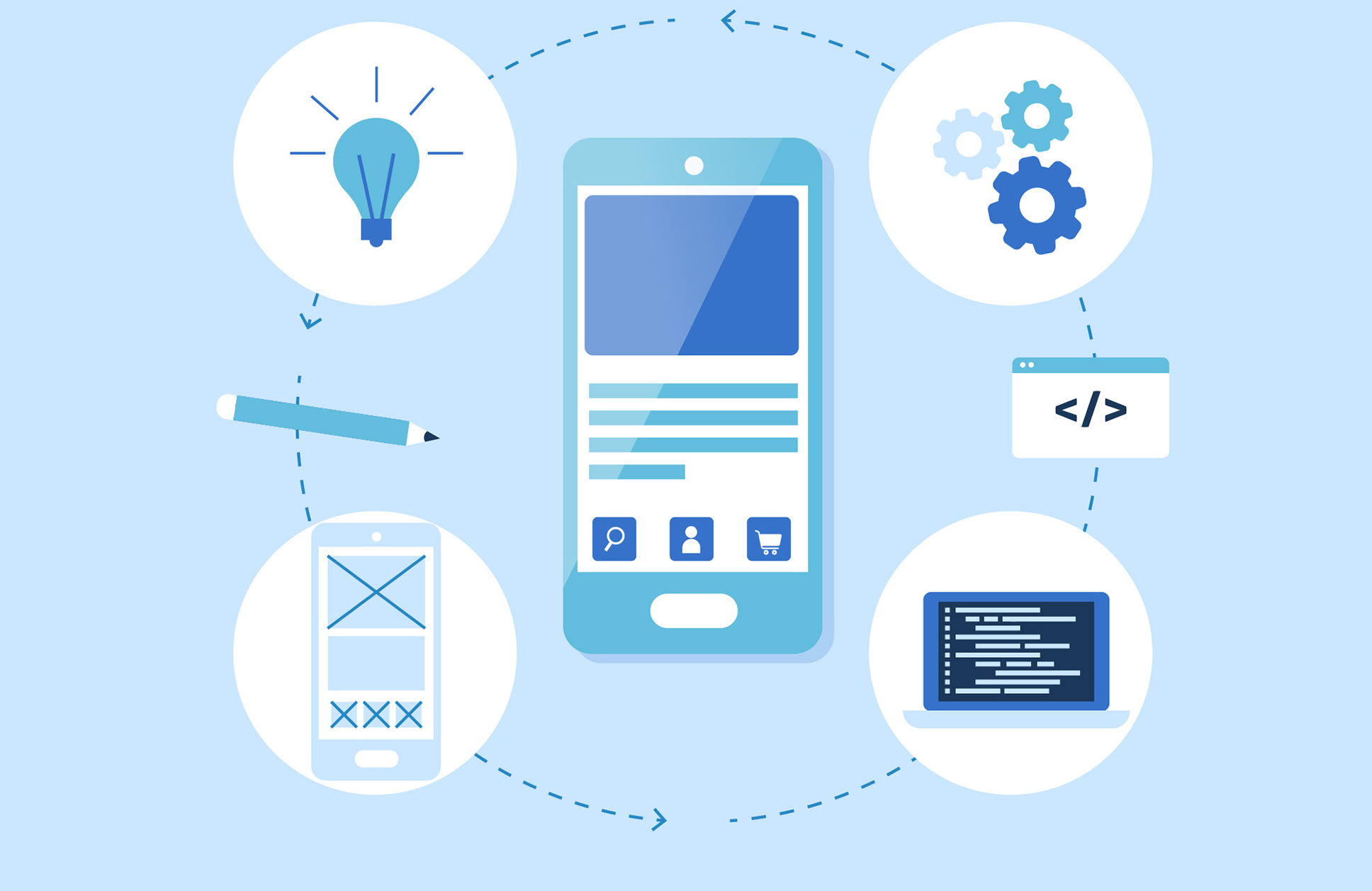


Mobile app development industry is going through a transformative phase. With the advancement in micro-processing technologies, you will be able to run mobile applications on multiple platforms. For example, apps built for mobiles will run seamlessly on desktops in the coming years. Moreover, mobile apps built with Flutter or React Native will work on Android Phones, iPhones, Macs, as well as PCs. But before we get more in-depth, let’s dig into the mobile app usage statistics to understand how users are spending their time using mobile phones, and what are the opportunities in building your own mobile application.
There are over 3.5 billion smartphone users worldwide, so there is no doubt that the industry is healthy and thriving. Stats are growing steadily, without any indications of slowing down. And studies show that an average American checks their phone at least once every twelve minutes, and over 10% of these people check their phone about every four minutes. There are some more statistics to keep in mind.
The statistics are motivating for anyone who wishes to build or develop a mobile app. But before we jump to any conclusions, let’s understand the exact process for mobile app development. Although it sounds very lucrative to build a mobile app to get a piece of the billion-dollar pie, the decision needs thought strategy and planning. The fact also states that your app will be competing with over 1.5 million applications on the Google Play Store and Apple’s App Store.
Mobile app development is a process for building mobile applications that run on mobile devices. These applications can either be pre-installed or downloaded and installed by the user later. They use the network capabilities of the device to work computing resources remotely. Hence, the mobile app development process requires creating software that can be installed on the device, and enabling backend services for data access through APIs, and testing the application on target devices.
To develop scalable mobile apps, you also need to consider screen sizes, hardware requirements, and many other aspects of the app development process. With an increasing number of jobs in the mobile app development industry, it is essential that the process is well defined and understood by entrepreneurs, startups, and especially developers.
The two most important mobile app platforms are iOS from Apple Inc. and Android from Google. iOS is Apple’s proprietary mobile operating system built specifically for iPhones. Android, however, runs on mobile devices manufactured by various OEMs, including Google.
While there are many similarities between the two, however different software development kits (SDKs) are used for different platforms. Apple uses iOS exclusively for their own devices, while Google has made Android available for other companies that meet specific requirements. Developers have built over 1.5 million applications for both platforms to date.
You can approach mobile app development in four different ways:
There are advantages and disadvantages to building an application, no matter which approach you choose. By choosing an approach that matches your strategy, you can achieve the desired user experience, avail computing resources, and build native features required for your application.
Choosing native app development helps when you want to use native capabilities offered by the platform. Native apps can access the hardware capabilities of the devices like GPS, camera, microphone, which helps in quicker execution of features making it easier to build a rich user experience.
Push notifications are much easier to implement on native development. For example, push notifications to go through iOS Server (APNS) and Google’s Cloud Messaging Platform. Native apps have fewer bugs, as the code is compiled in the native language.
The market is divided about 50-50 between iOS and Android. Your potential customer could be on any of the platforms, and sometimes on both. Building separate apps for both platforms requires an adequate budget, and not all companies have that. Moreover, developing for native platforms can make it harder to offer the same amount of speed and functionality required by your app.
Choose cross-platform development if you wish to align the user experience across all the platforms; you wish to have one development team publishing for both the platforms; and you don’t have the budget and time to build and maintain two different apps separately.
Progressive Web Applications (PWAs) are written in traditional web languages like Javascript, HTML5, CSS, and such. These apps are only accessible through the browser of your device. So, choose to develop a PWA if your user will have uninterrupted access to network connectivity, and they can solve their issues through the browser itself, without requiring any native capabilities of the device like camera, machine learning module, GPS, gyroscope, and such.
With that in mind, let’s understand the mobile app development process step by step and get to know everything you need to follow a systematic mobile app development process to build your next great app.

2 December 2025

24 November 2025

21 November 2025

17 November 2025

14 November 2025

D-U-N-S Number : 860501484
© 2023 ALL RIGHTS RESERVED. DESIGNED BY NINOS IT SOLUTION DEVELOPED BY ECPHASIS INFOTECH